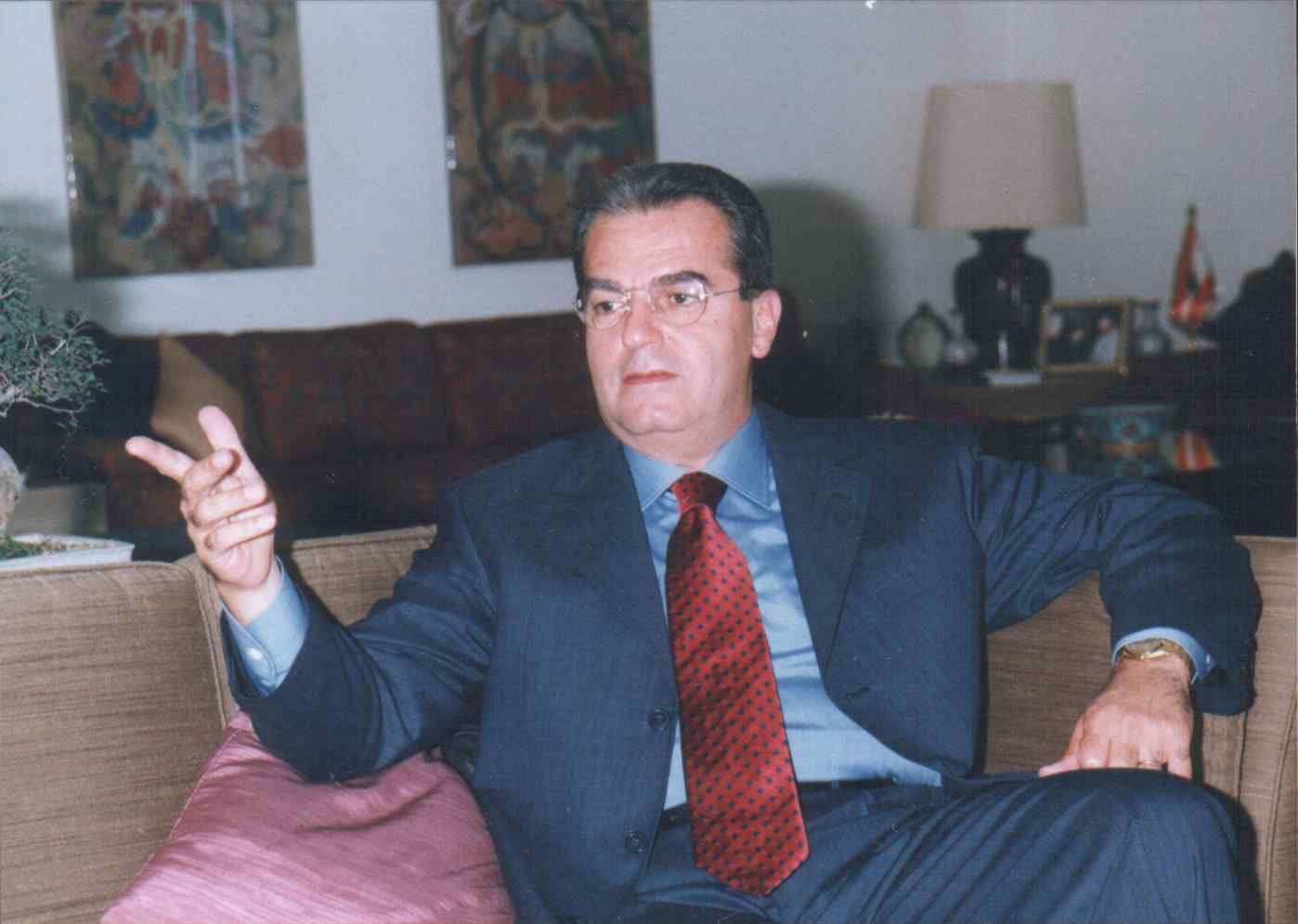De Khazen MembersPlease note all articles in this section do not represent El Khazen family as a whole or their views. It represents strictly the view of the individual and author, since the El Khazen family consists of more than 1000 members with different views and different policies. The main purpose of this page is to keep you updated with the different El Khazen members and their political views and articles.
Current Members of the El Khazen family are cordially invited to send us their profile and analysis that they have written for us to publish. It will keep the public updated with the different El Khazen members and views.
Please email me Malek at This email address is being protected from spambots. You need JavaScript enabled to view it. to update the website and publish profiles of El Khazen members.
Marie el Khazen 1908-1983
Written by Malek
Friday, 30 April 2021 00:45
Born in Lebanon at the beginning of the twentieth century, Marie el Khazen evolved into a modern, unconventional woman in a patriarchal society; a member of one of the oldest Lebanese families. Independent and with the famed Khazen sense of humor, her love of life and freedom inspired pastimes that encompassed broderie (with porcupine needles!), taxidermy, riding, driving, hunting, fishing, a fondness for animals, a love of literature and of course photography, at which she became famous only after her death. She grew up in a mansion in Tallet el Khazen, near Zgharta; her father being Said el Khazen, her mother Wardeh Torbey, and her grandmother Sultana Daher, the wife of Sheikh Fendi el Khazen, from Ghosta.Rather than turning professional, Marie remained a serious amateur photographer. With her Eastman Kodak camera and keen on experimenting, she had the skills to set up and use her own darkroom. She would pose, and occasionally dress up her subjects, such as in the 1929 portrait of Two Women Disguised as Men, in which both Marie el Khazen and Alice her sister are sitting on plush chairs with their legs crossed, beneath an ancestral portrait within a handsome room in Talle. Dressed in suits and ties and wearing tarbooshes (traditional Arab hats), they are enjoying cigarettes in long elegant holders of the period, and seem to be comfortable, even complacent in their newfound freedom.
The New York Times art critic Adam Shatz said of it: "Such pictures don't come along often, but once seen, they are impossible to forget, lodging themselves in the mind with the visceral force of revelation."SubcategoriesCheikh Philippe el Khazen Article Count: 2Cheikh Hanna el Article Count: 6Cheikh Farouk El Khazen Article Count: 1Cheikh Farouk El Khazen son of Cheikh Chafic El Khazen and Marie Masaad holds a BS in Business Administration and Certificates in Hotel Management from mainly the Swiss Cheikh Elias el Khazen Article Count: 1Cheikh Fady el Khazen profile Article Count: 1Cheikh Fady el Khazen son of Cheikh Chafic el Khazen and Marie Masaad holds a BS of Agriculture, and certificates in fruit processing and packings and Gestion des Entreprise. He is married to Mireille Abourizk, and have three children Malek, Manal and Mayssa
Cheikh Fady el Khazen, is the founder and managing partner of La Creperie, a four star seaside Restaurant. La Creperie restaurant is known worldwide. International magazines and travel guides (such as Discovery Channel: Insight Guide) has described La Creperie restaurant as one of the best in the Middle Eastern Region with a spectacular view and amazing cuisine. La Creperie Restaurant has welcomed since its opening many Celebrities, Presidents, Former Presidents, Ministers, Diplomatic Envoye and Ambassadors such as Alain Delon, Mireille Darc, Chantal Goya, Manita De La Plata, Secretary of State Donna Shalala, special envoye of the President Charles De Gaule, Mister De Lipovski etc Cheikh Fady el Khazen was the head of the Department of Advertisement, in the ministry of Agriculture from 1960 until 1992. He was also the head publisher of the state Agriculture Magazine Cheikh Richard Rahil El Khazen Article Count: 1Cheikh Richard Rahil El Khazen Profile
Mayssa el Khazen Article Count: 1Karen el Khazen Article Count: 1
Cheikh Serhal el Khazen Article Count: 1بطريركية انطاكية وسائر المشرق المارونية بكركي البركة الرسولية تشمل أولادنا الأعزاء: الشيخة نوميس، شقيقة المرحوم الشيخ سرحال توفيق الخازن وابنتها، وابناء عمتها، وأرملة خالها، وسائر ذويهم وأنسبائهم في الوطن والمهجر المحترمين بلغنا، ونحن في روما، نبأ فقدكم شقيقكم وخالكم ونسيبكم العزيزي المرحوم الشيخ سرحال، الذي لبى دعوة ربه الى دار البقاء عن ست وسبعون سنة، زخرت بالعطاء والتضحيات والحضور المميز، على أعلى المستويات في الكنيسة والوطن. وقد فجعتم بما كان عليه من حميد اخلاق، وعلم وفير، وثقافة واسعة، ولا غرو فهو سليل عائلة الخازن العريقة والغنية عن التعريف. وقد ترعرع في كنف جده المرحوم الشيخ اسكندر الخازن المعروف بسعة اطلاعه، وعلاقاته الوطنية والدولية، وقد زرع في كتب حفيده حبه للمعرفة، وشغفه بالتاريخ وبراعته في بناء العلاقات والمحافظة عليها. تلقى المرحوم الشيخ سرحال علومه في واحدة من أرقى المدارس الكاثوليكية في المنطقة، وراح يغذي ميراثه الفكري والثقافي بالبحث والتنقيب وجمع الكتب والمخطوطات والوثائق التاريخية وبناء العلاقات المتينة مع عدد من السفراء الأجانب، ولا سيما السفير الفرنسي والسفير البابوي، اللذين كانت تروق لهما زياراته المتكررة، وأحاديثه الشيقة عن العلاقات التاريخية ما بين عائلة آل الخازن وحاضرة الفاتيكان، والدولة الفرنسية منذ العهد الملكي فيها، حيث تبوأ المرحوم الشيخ مرعي الدحداح، والد زوج عمته، مركز مستشار خاص للملك لويس فيليب. ولقد تجمعت لدى فقيدنا مجلدات من الوثائق والرسائل المتبادلة بين الفرنسيين وأجداده آل الخازن وآل الدحداح. ومن أطراف ما لديه مخطوطة قديمة كتبها قريب له في مطلع القرن العشرين الى هيئة الأمم يتحدث فيها عن حقوق الانسان وسيادة لبنان واستقلاله. كما كان يملك مكتبة كبيرة وغنية تحوي كتبًا قيمة ونادرة. وقد دفعه حبه للوطن وللعلم الى تقديم هذه المكتبة هدية الى العلامة المرحوم فؤاد افرام البستاني، على أمل أن ينشر ما فيها من كنوز على الأجيال اللبنانية الطالعة. وكان يطيب له التحادث مع الاساتذة والأكادميين، خاصة في ما يتعلق بتاريخ لبنان والمسيحية في الشرق، وغالبًا ما كان يزودهم بمخطوطات فريدة عن علاقة اللقبنانيين مع الدولة العثمانية ومع حاضرة الفاتيكان وفرنسا. وكم كنا نأنس الى أحاديثه الشيقة أثناء زياراته المتواترة الى الصرح البطريركي، حيث كنا نتداول في شؤون الكنيسة والوطن بشكل عام. وكان يبدي تأثرًا كبيرًا لما آلت إليه أحوال المسيحيين في لبنان والمنطقة. ولقد شغله شغفه بالعلم والتنقيب والمعرفة عن الإهتمام بنفسه، فلم يبن عائلة خاصة به، بل كرس كل محبته لشقيقته الشيخة الفاضلة التي كانت تشده اليها أقوى أواصر الالفة والأخوة، ولأبنة شقيقته السيدة ماري دانيال التي كان لها بمثابة الأب الحنون المضحي، كما كانت بدورها له بمثابة الأبنة المحبة الوفية. وكان، رحمه الله، ذا ايمان عميق، وقد تربى عليه في بيت كريم وعلى يد والدين فاضلين عرفا ان يرسخا في قلوب ابنائهما، الى جانب الفضائل المسيحية، روح الوطنية الحقة، والبذل في سبيل لبنان. وكان يعبر عن هذا الايمان بممارسته الواجبات الدينية عن قناعة وتقوى صادقة، ومشاركته في كافة الاحتفالات الدينية في الرعية وتناول الأسرار المقدسة. وعندما أقعده المرض في السنوات الأخيرة، كان يطلب الى خادم الرعية ان يحمل اليه القربان المقدس الذي كان يتناوله بكل خشوع وفرح وتقوى. كما كان يجسد هذا الإيمان بما كان يبذله بسخاء من تقدمات لكنائس الرعية ولتشجيع الخيرية والرعوية، فضلاً عما كانت تجود به كقه من مساعدات سخية للفقراء والمحتاجين بصمت ودون تبجح، عملاً بكلام السيد المسيح: "أما أنت فاذا احسنت الى أحد، فلا تجعل شمالك تعلم بما تعمل يمينك، حتى يكون احسانك في الخفية، وأبوك الذي يرى الخفية هو يجازيك" (متى 6/3-4). وها هو يرتحل عن هذه الدنيا مصحوبًا بالدعاء الى الله أن ينعم روحه بوافر رحمته، ويفسح له صحبة الأبرار والمؤمنين الأتقياء والمجاهدين الصالحين. وعلى هذا الأمل، واكرامًا لدفنته، واعرابًا لكم عن عواطفنا الأبوية، نوفد اليكم سيادة أخينا المطران سمير مظلوم، الزائر الرسولي على الموارنة في أوروبا ونائبنا البطريركي السامي الاحترام ليرأس باسمنا حفلة الصلاة لراحة نفسه وينقل اليكم جميعًا تعازينا الحارة. بلل الله ثرى الفقيد الشيخ الجليل بندى الرحمة وسكب على قلوبكم بلسم العزاء. عن مقر إقامتنا في روما، في الثاني عشر من تشرين الأول سنة 2005. الكردينال نصرالله بطرس صفير بطريرك انطاكية وسائر ا لمشرق الختم الإمضاء Leeza-Maria el Khazen Article Count: 1
Leeza-Maria el Khazen
Cheikh Jean-Philippe el Khazen Article Count: 1
Cheikh Jean-Philippe el Khazen
Cheikh Kesrouan EI-Khazen Article Count: 1
Cheikh Kesrouan EI-Khazen
Current de Khazen members: Article Count: 7Current de Khazen members:
Please note all articles in this section do not represent el Khazen family as a whole or their views. It represents strictly the view of the individual and author, since the el Khazen family consists of more than 1000 members with different views and different policies. This page main purpose is to keep you updated with the different el Khazen members and their political views and articles.
Current Members of the el Khazen family are cordially invited to send us their profile and analysis that they have written for us to publish. It will keep the public updated with the different el Khazen members and views.
Cheikh Fouad el Khazen Article Count: 1
By Will Rasmussen,
"It's been a busy day," he explains as he slides his phone into his suit pocket. "I am flying to Saudi Arabia tonight - to pay my condolences." Khazen, relaxes in an upholstered chair under a print of a cat from the Metropolitan Museum of Art (one of his companies, Contracting & Trading Holding, goes by the acronym CAT). To Khazen's left is a sweeping view of the Mediterranean and downtown Beirut, which he, as a member of the board of directors at Solidere, helped build. On his left is a framed picture of him as a young man with Saudi Prince Majid, a son of King Abdullah. While he was a student at Ecole Superieure d'Ingenieurs de Beyrouth he married the daughter of Emile Bustani, the patriarch of a leading Beirut family and a former chairman of CAT. Khazen rose through the ranks of CAT, where he now serves as a member of the board of directors, and used his close ties with Gulf rulers to become one of Lebanon's most prominent businessmen. He controls an impressive list of companies and unions, including the Banque de l'Industrie et du Travail (BIT), Pan Arabian Travel Services, Mothercat Saudi Arabia. He heads the Lebanese Contractors Syndicate, and the Society of Hoteliers and Tourism. On the side, he runs the Automobile Touring Club of Lebanon, the Cooperation for Lebanese Development, and the Society of Lebanese Gastronomy. "I'm blessed with a team of very reliable assistants," he says, attempting to explain how he manages, at the age of 71, such a diverse collection of companies. "I don't complain about being too busy. There is a lot of variety in my life. I hate monotony." The last few months, however, have tested the ability of Khazen and his nearly half-century of experience in the Arab business world. The assassination of former Premier Rafik Hariri crippled tourism, strained the banking system, tested Hariri-founded Solidere and exacerbated an already difficult situation for the Lebanese contracting industry. While Solidere has engineered an impressive recovery - "A" shares are now at $13.56 after plunging to below $5 following Hariri's assassination - contracting has been hit hard by a general economic slowdown. Construction permits, for example, are down 15 percent in the first half of 2005 compared to the same period last year. The recent surge in oil prices has meant high construction costs, especially for asphalt.
In addition, the Lebanese government closed quarries throughout the country due to environmental damages, meaning more expensive gravel and stone needs to be imported from Syria. Steel prices, meanwhile, have long been high due to increased demand from China. "We have been facing major problems, some due to internal factors, others due to international factors," Khazen says. As chairman of the Bustan Hotel and BIT Bank, one of Lebanon's smaller banks which is currently seeking to expand its capitol, Khazen has seen first hand the extent of the damage from the assassination, which has all but ruined the summer tourist season and made foreign investors nervous. "With oil prices high, there's a surplus of money in the Gulf, but they don't know where to invest it," Khazen says. "Lebanon would be an ideal place to put all the money because our banking system, with its secrecy and freedom of transfer, is attractive." "After September 11, Arab investors are looking for other places to invest," he adds. "Lebanon could have taken advantage of that but unfortunately we are passing through a very difficult and sad period." Like his father-in-law Emile Bustani, Khazen has made his career in part because of his closeness to the Gulf, where CAT made much of its fortune. On one of his office desks sits a book of pictures from his mountain home in Reyfoun. Visitors to the home include King Abdullah, who was chief of Saudi Arabia's national guard when he visited Reyfoun in the 1970's, the late U.A.E. President Sheikh Zayed, and a variety of other ministers from Gulf states. "They used to come a lot before the war," Khazen says of the Gulf royals. "I have hundreds of albums just like this one." Khazen has cultivated relationships with Gulf power-brokers for decades and knew most of the current rulers when they were young up-and-comers. His secret? Constant contact, whether through visits to Saudi Arabia or entertaining at his mountain villa in Lebanon. "There's a French proverb," he explains, smiling. "Far from the eyes, far from the heart." 20-second resume Who's in the family? Two children and six grandchildren. What car do you drive? "I drive many cars, but mostly a Mercedes 500 and an Audi A-8." What was your last vacation? "Two months ago, to southern Italy." What's your favorite book? Anything by Alexander Najjar The Khazens and the Shihabs (1697-1840) Article Count: 1Patriarch Toubia Kaiss el Khazen Article Count: 2John Lewis Burckhardt Article Count: 1John Lewis Burckhardt's visit to Keserwan in March,1812.
John Lewis Burckhardt (Johann Ludwig Burkhardt), the famous European
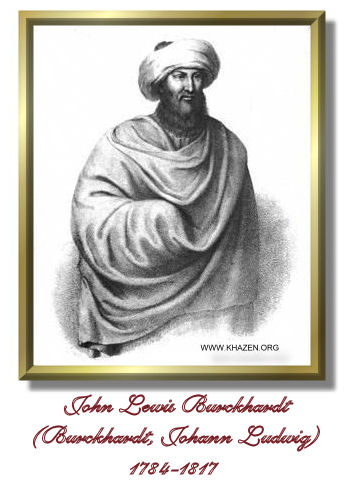 explorer came to Keserwan on March 1812 during his explorations of the Levant. explorer came to Keserwan on March 1812 during his explorations of the Levant.His impressions about his visit was documented in his book "Travels in Syria and the Holy Land", chapter 3, "Journal of a Tour from Aleppo to Damascus, Through the Valley of the Orontes and Mount Libanus, in February and March, 1812."
In his visit to Keserwan province he met its Governor, Cheikh Bishara Jaffal El Khazen, in his residence in Zouk Mikael.
He described in detail the geography, landscape, people, socioeconomic situation, Christians especially Maronites and their clergy and even the political situation dominant at that period of time.
His book gives a unique and comprehensive look to a period in the history of Mount Lebanon from the point of view of unbiased and neutral source. People familiar with the places he mentioned in his tour will be amused of reading about them, imagining these places, the way they were almost 200 hundred years ago.
Here is chapter 3 "Journal of a Tour from Aleppo to Damascus, Through the Valley of the Orontes and Mount Libanus, in February and March, 1812" of Burckhardt's book "Travels in Syria and the Holy Land", the section about his tour in Keserwan :
The country of Kesrouan, which I now entered, presents a most interesting aspect; on the one hand are steep and lofty mountains, full of villages and convents, built on their rocky sides; and on the other a fine bay, and a plain of about a mile in breadth, extending from the mountains to the sea. There is hardly any place in Syria less fit for culture than the Kesrouan, yet it has become the most populous part of the country. The satisfaction of inhabiting the neighbourhood of places of sanctity, of hearing church bells, which are found in no other part of Syria, and of being able to give a loose to religious feelings and to rival the Mussulmans in fanatisim, are the chief attractions that have peopled Kesrouan with Catholic Christians, for the present state of this country offers no political advantages whatever; on the contrary, the extortions of the Druses have reduced the peasant to the most miserable state of poverty, more miserable even than that in the eastern plains of Syria; nothing, therefore, but religious freedom induces the Christians to submit to these extortions; added perhaps to the pleasure which the Catholics derive from persecuting their brethren of the Greek church, for the few Greeks who are settled here are not better treated by the Maronites, than a Damascene Christian might expect to be by a Turk. The plain between the mountain and the sea is a sandy soil; it is sown with wheat and barley, and is irrigated by water drawn from wells by means of wheels. At five hours and a quarter is Ghafer Djouni غفر جوني)), a market place, with a number of shops, built on the sea side, where there is a landing place for small boats.
The Beirout road continues from hence along the sea coast, but I wished to visit some convents in Kesrouan, and therefore turned up the mountain to the left. At the end of five hours and three quarters I came to a wood of firs, which trees are very common in these parts; to the right is the village Haret el Bottne ( . (حارت ألبطنهSix hours and three quarters Zouk Mykayl (زوق مكايل), the principal village in Kesrouan, where resides the Sheikh Beshera, of the family of Khazen, who is at present the governor of the province. The inhabitants of Zouk consist, for the greater part, of the shopkeepers and artizans who furnish Kesrouan with articles of dress or of luxury. I observed in particular many makers of boots and shoes. Seven hours, is Deir Beshara; a convent of nuns. At the end of seven hours and a quarter, I arrived at Antoura, a village in a lofty situation, with a convent, which formerly belonged to the Jesuits, but which is now inhabited by a Lazarist, the Abbate Gandolfi, who is the Pope's delegate, for the affairs of the eastern church. I had letters for him, and met with a most friendly reception: his intimate acquaintance with the affairs of the mountain, and of the Druses, which his residence of upwards of twelve years, and a sound understanding, have enabled him to acquire, renders his conversation very instructive to the inquisitive traveller.
March 15th. - I left Antoura in the evening, to visit some convents in a higher part of the mountains of Kesrouan. Passed Wady Kheredj (خرج), and at three quarters of an hour from Antoura, the ruined convent of Bekerke (بكركه), once the residence of the famous Hindye, whose history Volney has given. Now that passions have cooled, and that the greater part of the persons concerned are dead, it is the general opinion that Hindye's only crime was her ambition to pass for a saint. The abominable acts of debauchery and cruelty of which she was accused, are probably imaginary: but it is certain that she rigorously punished the nuns of her convent who hesitated to believe in her sanctity, or who doubted the visits of Jesus Christ, of which she boasted. Hindye died about ten years since in retirement, in the convent of Seidet el Hakle. At one hour and a half from Antoura, on the top of the mountain, is the convent of Harissa, belonging to the Franciscans of Terra Santa, and inhabited at present by a single Piedmontese monk. On the breaking out of the war between England and the Porte, Mr. Barker, the Consul at Aleppo, received from the Emir Beshir an offer of this convent as a place of refuge in his territory. Mr. Barker resided here for two years and a half, and his prudent and liberal conduct have done great credit to the English name in the mountain. The French consuls on the coast applied several times to the Emir Beshir, by express orders from the French government, to have Mr. Barker and his family removed; but the Emir twice tore their letters in pieces and returned them by the messenger as his only answer. Harissa (ﻪﺳﻳﺭﻫ) is a well built, large convent, capable of receiving upwards of twenty monks. Near it is a miserable village of the same name. The view from the terrace of the convent over the bay of Kesrouan, and the country as far as Djebail, on one side, and down to Beirout on the other, is extremely beautiful. The convent is situated in the midst of Kesrouan, over the village Sahel Alma.
March 16. - I slept at Harissa, and left it early in the morning, to visit Ayn Warka. The roads in these mountains are bad beyond description, indeed I never before saw any inhabited country so entirely mountainous as the Kesrouan: there are no levels on the tops of the mountain; but the traveller no sooner arrives on the summit, than he immediately begins the descent; each hill is insulated, so that to reach a place not more than ten minutes distant in a straight line, one is obliged to travel three or four miles, by descending into the valley and ascending again the other side. From Harissa I went north half an hour to the village Ghosta (غسته), near which are two convents called Kereim and Baklous. Kereim [ is a rich Armenian monastery, in which are twenty monks. The silk of this place is esteemed the best in Kesrouan. A little farther down is the village El Basha. One hour and a quarter Ayn Warka (عين وارقه), another Maronite convent. I wished to see this place, because I had heard that a school had lately been established here, and that the convent contained a good library of Syrian books; but I was not so fortunate as to see the library; the bishop, although he received me well, found a pretext for not opening the room in which the books are kept, fearing, probably, that if his treasures should be known, the convent might some day be deprived of them. I however saw a beautiful dictionary in large folio of the Syriac language, written in the Syriac character, which, I suppose, to be the only copy in Syria. Its author was Djorjios el Kerem Seddany, who composed it in the year 1619. Kerem Seddany is the name of a village near Bshirrai. This dictionary may be worth in Syria eight hundred or a thousand piastres; but the convent would certainly not sell it for less than two thousand, besides a present to the bishop.
The school of Ayn Warka was established fifteen years since by Youssef, the predecessor of the present bishop. It is destined to educate sixteen poor Maronite children, for the clerical profession; they remain here for six or eight years, during which they are fed and clothed at the expense of the convent, and are educated according to the literary taste of the country; that is to say, in addition to their religious duties, they are taught grammar, logic, and philosophy. The principal books of instruction are the Belough el Arab, كتاب بلوغ ألعرب في فن ألأدب)), and the Behth el Mettalae بحث ألمطلع)), both composed by the bishop Djermanous (ﺏﻟﺣ ﻲﻔ ﻥﺍﺭﻁﻤ ﺱﻭﻧﺎﻣﺭﺠ ﺕﺎﺤﺭﻔ). At present there is only one schoolmaster, but another is shortly expected, to teach philosophy. The boys have particular hours assigned to the different branches of their studies. I found them sitting or lying about in the court-yard, each reading a book, and the master, in a common peasant's dress, in the midst of them. Besides the Arabic language they are taught to speak, write, and read the Syriac. The principal Syriac authors, whose books are in the library, are Ibn el Ebre أبن ألأبرة)), or as the Latins call him, Berebreo, Obeyd Yeshoua عبيد يشوع)), and Ibn el Aassal أبن ألعسل)), their works are chiefly on divinity. The bishop is building a dormitory for the boys, in which each of them is to have his separate room; he has also begun to take in pupils from all parts of Syria, whose parents pay for their board and education. The convent has considerable landed property, and its income is increased by alms from the Catholic Syrians. The boys, on leaving the convent, are obliged to take orders.
From Ayn Warka I ascended to the convent of Bezommar (بزمار), one hour and a quarter distant. It belongs to the Armenian Catholics, and is the seat of the Armenian patriarch, or spiritual head of all the Armenians in the East who have embraced the Catholic faith. Bezommar is built upon the highest summit of the mountain of Kesrouan, which is a lower branch of the southern Libanus. It is the finest and the richest convent in Kesrouan, and is at present inhabited by the old patriarch Youssef, four bishops, twelve monks, and seventeen priests. The patriarch himself built the convent, at an expense of upwards of fifteen thousand pounds sterling. Its income is considerable, and is derived partly from its great landed possessions, and partly from the benefactions of persons at Constantinople, in Asia Minor, and in Syria. The venerable patriarch received me in his bed, from which, I fear, he will never rise again. The Armenian priests of this convent are social and obliging, with little of the pride and hypocrisy of the Maronites. Several of them had studied at Rome. The convent educates an indefinite number of poor boys; at present there are eighteen, who are destined to take orders; they are clothed and fed gratis. Boys are sent here from all parts of the Levant. I enquired after Armenian manuscripts, but was told that the convent possessed only Armenian books, printed at Venice.
I left Bezommar to return to Antoura. Half an hour below Bezommar is the convent Essharfe (ﻪﻓﺷﻟﺍ), belonging to the true Syrian church. The rock in this part is a quartzose sand-stone, of a red and gray colour. To the left, still lower down, is the considerable village Deir Aoun (دير عون), and above it the Maronite convent Mar Shalleitta مار شليطه)). I again passed Mar Harissa on my descent to Antoura, which is two hours and a half distant from it.
March 17th. - The district of Kesrouan, which is about three hours and a half in length, from N. to S. and from two to three hours in breadth across the mountains, is exclusively inhabited by Christians: neither Turks nor Druses reside in it. The Sheikh Beshara collects the Miri, and a son of the Emir Beshir resides at Ghazir, to protect the country, and take care of his father's private property in the district. The principal and almost sole produce is silk; mulberry trees are consequently the chief growth of the soil; wheat and barley are sown, but not in sufficient quantity for the consumption of the people. The quantity of silk produced annually amounts to about sixty Kantars, or three hundred and thirty English quintals. A man's wealth is estimated by the number of Rotolas of silk which he makes, and the annual taxes paid to government are calculated and distributed in proportion to them. The Miri or land-tax is taken upon the mule loads of mulberry leaves, eight or ten trees, in common years, yielding one load; and as the income of the proprietors depends entirely upon the growth of these leaves, they suffer less from a bad crop, because their taxes are proportionally low. The extraordinary extortions of the government, however, are excessive: the Emir often exacts five or six Miris in the year, and one levy of money is no sooner paid, than orders are received for a fresh one of twenty or thirty purses upon the province. The village Sheikh fixes the contributions to be paid by each village, taking care to appropriate a part of them to himself. Last year many peasants were obliged to sell a part of their furniture, to defray the taxes; it may easily be conceived therefore in what misery they live: they eat scarcely any thing but the worst bread, and oil, or soups made of the wild herbs, of which tyranny cannot deprive them. Notwithstanding the wretchedness in which they are left by the government, they have still to satisfy the greediness of their priests, but these contributions they pay with cheerfulness. Many of the convents indeed are too rich to require their assistance, but those which are poor, together with all the parish priests and church officers, live upon the people. Such is the condition of this Christian commonwealth, which instead of deserving the envy of other Christians, living under the Turkish yoke, is in a more wretched state than any other part of Syria; but the predominance of their church consoles them under every affliction, and were the Druse governor to deprive them of the last para, they would still remain in the vicinity of their convent.
Contributions are never levied on the convents, though the landed property belonging to them pays duties like that of the peasant; their income from abroad is free from taxes. Loans are sometimes required of the convents; but they are regularly reimbursed in the time of the next harvest. The priests are the most happy part of the population of Kesrouan; they are under no anxiety for their own support; they are looked upon by the people as superior beings, and their repose is interrupted only by the intrigues of the convents, and by the mutual hostilities of the bishops.
The principal villages in Kesrouan, beginning from the north, are Ghadsir (عذير), Djedeide (جديدت), Aar Amoun (عار أمون), Shenanayr (شنانعير), Sahel Alma (سهل علمه), Haret Szakher (حارت صخر), Ghozta (غزته), Deir Aoun (دير عون), Ghadir (غدير), Zouk Mikayl زوق مكايل) ), Djouni (جوني), Zouk Meszbah (زوق مصبح), Zouk el Kherab زوق ألخراب)), and Kornet el Khamra .(قرنة ألخمره)
About John Lewis Burckhardt (Burckhardt, Johann Ludwig) , 1784-1817 :
European explorer, b. Switzerland, educated in Germany. Supported by an English association for promoting African discovery, he visited Egypt and Syria (1809-13), rediscovered Petra (1812), then, posing as a learned Muslim, he became the first Christian to reach Medina. He died while preparing to set out from Upper Egypt for his original goal, the Niger River. Included in his Travels in Arabia (1829) is a notable account of Mecca. His journals, published by the African Association, include Travels in Nubia (1819), Travels in Syria and the Holy Land (1822), Notes on the Bedouin and Wahabys (1830), and Arabic Proverbs (1830).
Cheikh Bishara Jaffal el Khazen of Zouk Mikael Article Count: 2Patriarch Youssef Dargham el Khazen Article Count: 2Cheikh Francis Abee Nader and his son Yousef Article Count: 1Cheikh Amine El Khazen Article Count: 1CURRICULUM VITAE Cheikh Amine el Khazen
The Khazen family Bishops and Archbishops Article Count: 1The Martyrs Cheikh Philippe and Cheikh Farid el Kh Article Count: 1
| |||||||||||||||||||||||||||||||||||||||||||||||||||||||||||||||||||||||||||||
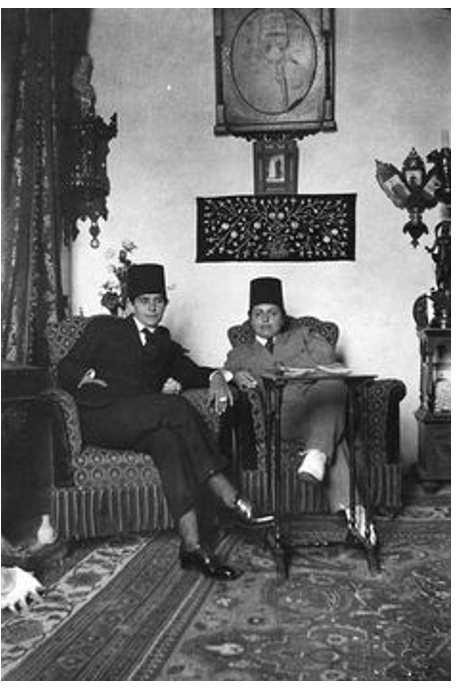
 Richard Rahil El Khazen is a professional actor located in the
Richard Rahil El Khazen is a professional actor located in the

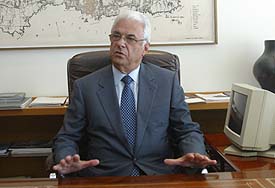 BEIRUT: Running a few minutes late for a noon interview, Fouad al-Khazen strides into his elegant sixth floor Gemmayzeh office, speaking in French on his mobile phone. Khazen, who has amassed a fortune in the contracting and banking industries, cuts an elegant figure in a light grey Brioni suit and Rosetti shoes. Tall and slender, his silver hair is combed immaculately back over his forehead.
BEIRUT: Running a few minutes late for a noon interview, Fouad al-Khazen strides into his elegant sixth floor Gemmayzeh office, speaking in French on his mobile phone. Khazen, who has amassed a fortune in the contracting and banking industries, cuts an elegant figure in a light grey Brioni suit and Rosetti shoes. Tall and slender, his silver hair is combed immaculately back over his forehead.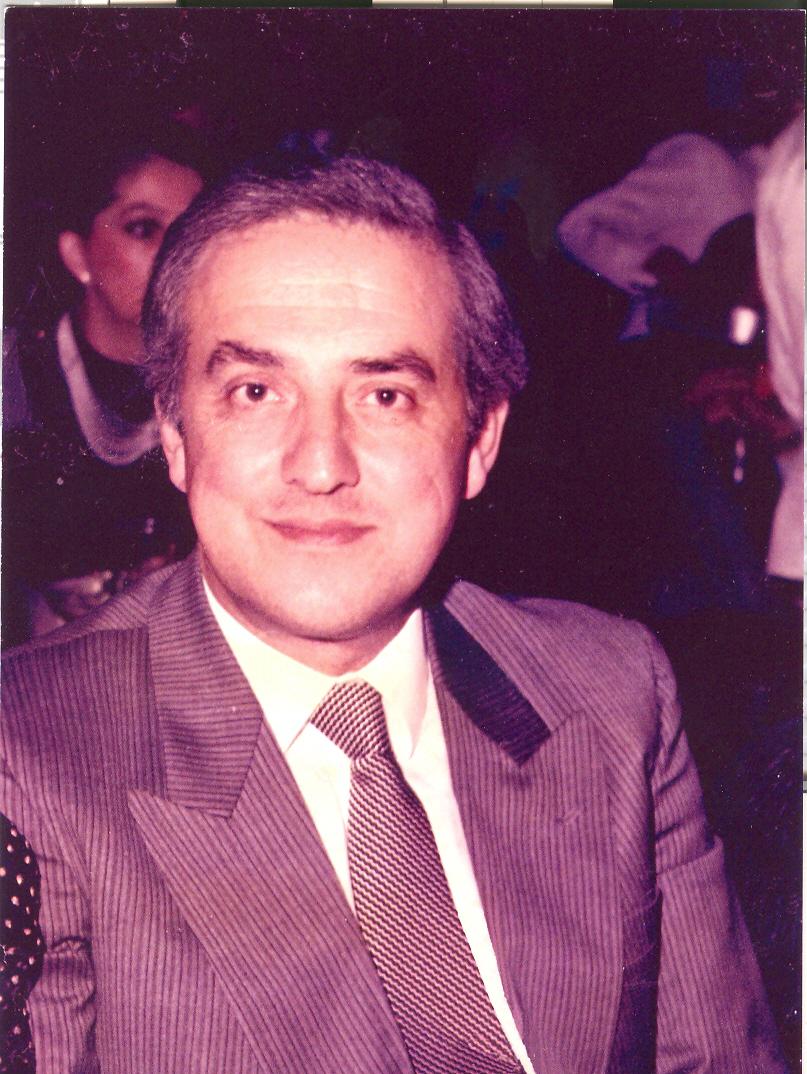
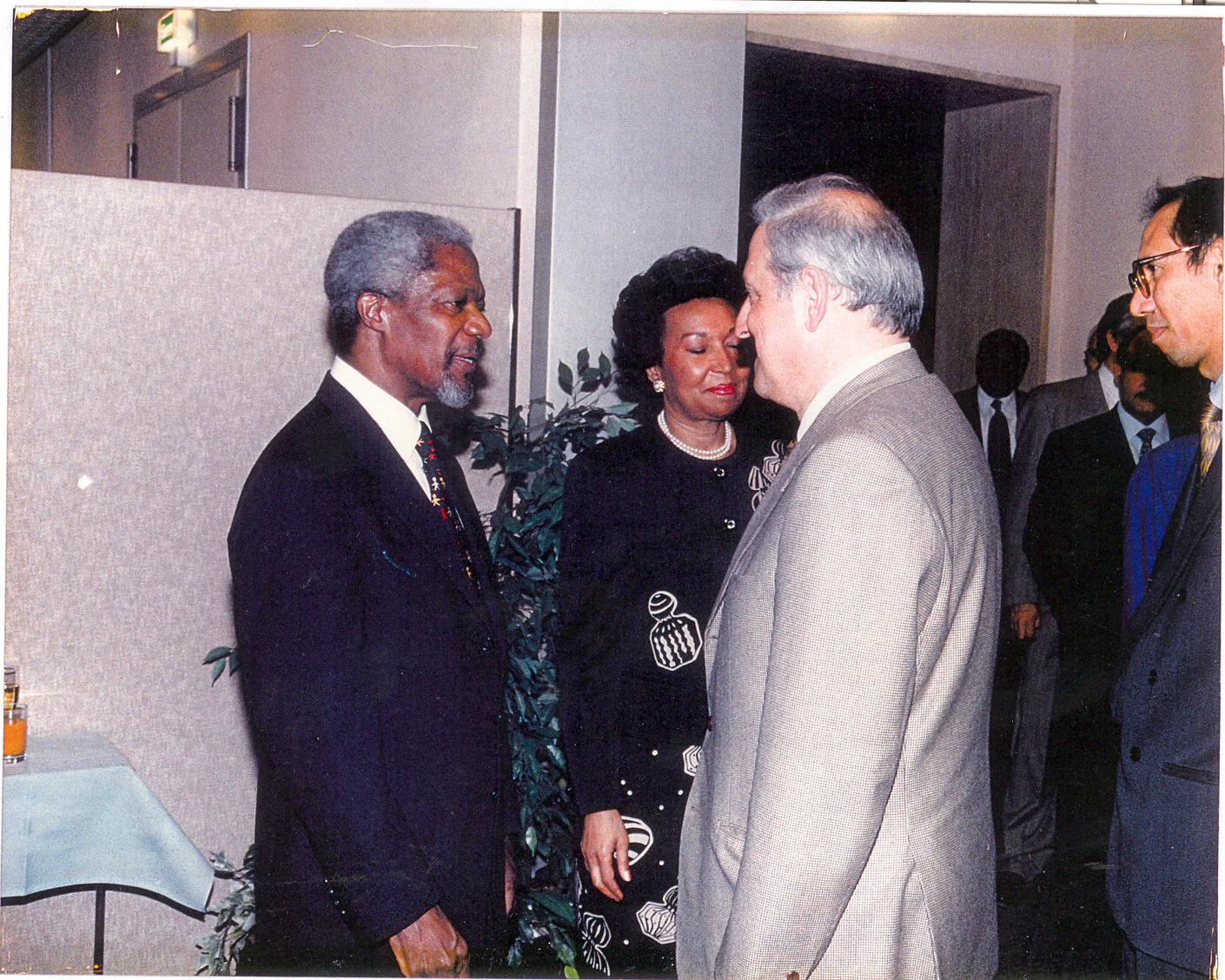
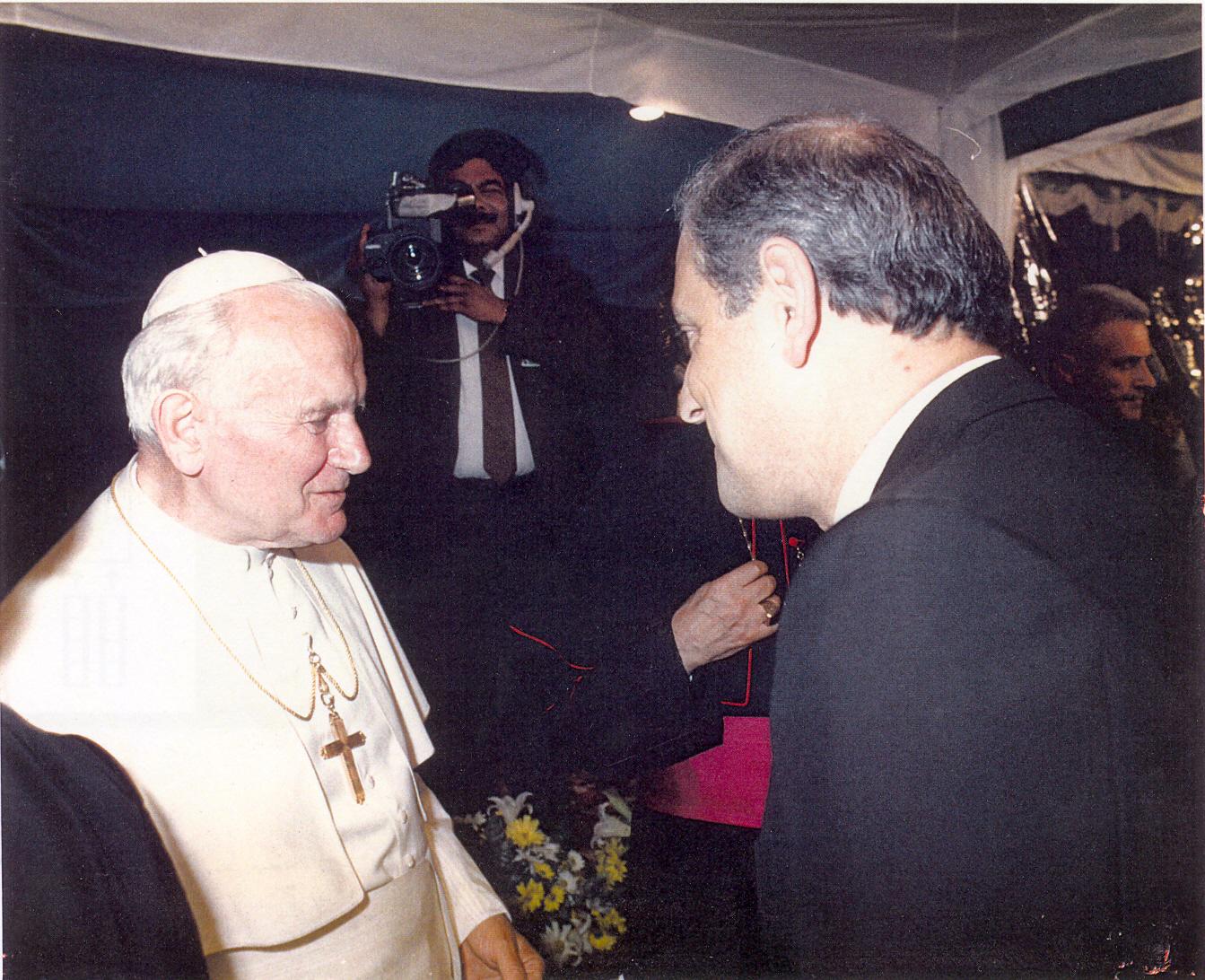
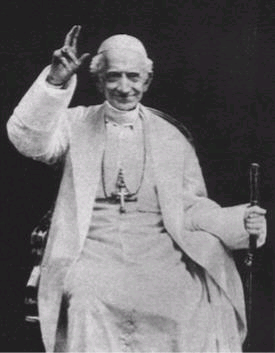
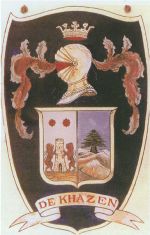 هو ابن حصن، ابن ابي قنصوة فياض، ابن ابي نوفل نادر، ابن ابي نادر خازن، ابن ابي صقر ابراهيم، ابن الشدياق سركيس الخازن، ولد سنة
هو ابن حصن، ابن ابي قنصوة فياض، ابن ابي نوفل نادر، ابن ابي نادر خازن، ابن ابي صقر ابراهيم، ابن الشدياق سركيس الخازن، ولد سنة
.bmp)
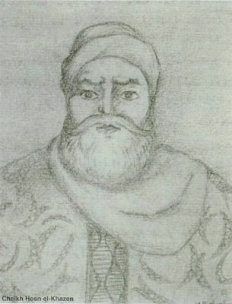
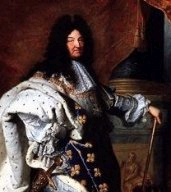
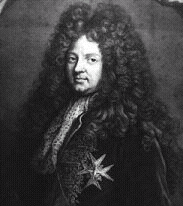
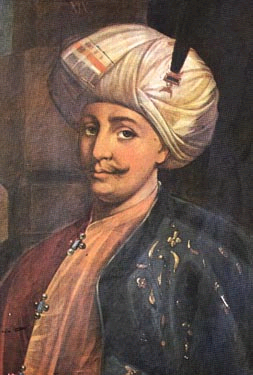
 ملحم
ملحم